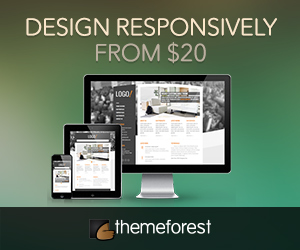Blog posts are different from paper-based readables in that they’re relatively uncomfortable to read (especially the longer ones). Not every one of your visitors is likely to sit through everything you have to say. Statistically, people only skim the length of the page in order to decide whether the piece is useful to them or not. Also make sure they’re still easy to read if your visitors have enough patience to take in every single word (so they won’t have a headache after).
The key idea here is to divide your paragraphs and sentences into easily digestible chunks. Second, HTML is your friend: I’ll be mentioning several tags you can put to good use. Off we go:
Make a meaningful title, introduction, and conclusion
The title should properly summarize the whole post. Don’t hesitate to make them catchier if need be, but keep them logical and truthful. (“How to Lose Weight By Doing Nothing” should be backed up properly if you really mean it!)
Your introduction, on the other hand, should hook your reader immediately as it is also the first thing he sees. Finally, your conclusion must make your reader remember what he just read.
Divide your post into logical sections and use headers to label each one
This should come easy if you start writing your post based on a preconceived outline. Rather than using <strong>, <b>, <i>, <em> use HTML headers <h1>, <h2>, <h3>, <h4>, <h5> <h6>. The larger the number, the lower the rank. Lower-rank headings should always fall under higher-rank headings. Remember to keep your headings parallel!
Add anchors and link to them
You can make people scoot over to a section of your text using a “local link”. Just name your sections using the id attribute and link to them. For example:
<h3 id="section1">Section 1</h3> <p>Refer to <a href="#section2">Section 2</a> for details...</p> <h3 id="section2">Section 2</h3> <p>As mentioned in <a href="#section1">>Section 1</a>...</p>
Use lists whenever you can
If you can simplify your paragraphs or sentences into a list of parallel ideas, use a list. For example:
Why I Don't Want To Go To School Today
<ul>
<li>My dog ate my homework.</li>
<li>I have a bad cold.</li>
<li>The cafeteria food stinks.</li>
</ul>
Use <ul> for unordered lists and <ol> for ordered lists. Another type of list is the definition list, which helps you define a set of terms systematically. For example:
A Mini L33T Dictionary
<dl>
<dt>LOL</dt>
<dd>Laugh Out Loud</dd>
<dt>JOO/J00</dt>
<dd>You</dd>
<dt>ROTFL</dt>
<dd>Rolling On The Floor Laughing</dd>
</dl>
Add illustrations to drive the point home
You can never go wrong with adding a meaningful picture to your post. Whether it’s a pie chart, a photo, or a caricature, so long as it’s makes sense within the context of the piece, insert it! Make sure the image is in the proper place and is also readable (it shouldn’t be too small or too big for the page).
(Learn how you to find free stock photos and how to use the image tag’s attributes.)
Emphasize and distinguish important words and phrases in your text
Here are several important HTML tags that can help make your text more meaningful:
<em>and<strong>to stress important words<blockquote>and<q>to quote text (<blockquote>for multiple paragraphs,<q>for inline quotes)<cite>to refer to the body of work (article, book, movie, website) you have quoted<dfn title="meaning">to identify a term the first time it is mentioned (e.g. they call it a blog)<abbr title="unabbreviated text">and<acronym title="acronym meaning">to identify and spell out acronyms (e.g. NASA)<code>to distinguish computer code (<var>for variables in computer code,<samp>for output in computer code)
I seem to have mentioned a lot of HTML tags in this post. Don’t be intimidated! The easiest way to understand and feel at ease with markup is to use it more often.No matter how perfectly the blog is done it is very important to choose the right blog hosting provider that can keep the downtime to minimum because a wrong choice of web host cannot guarantee 99% up time and this might result is loosing some quality traffic to your blog. That, coupled with a very readable post, should keep your visitors coming back for more.
Originally posted on June 1, 2007 @ 7:18 am
